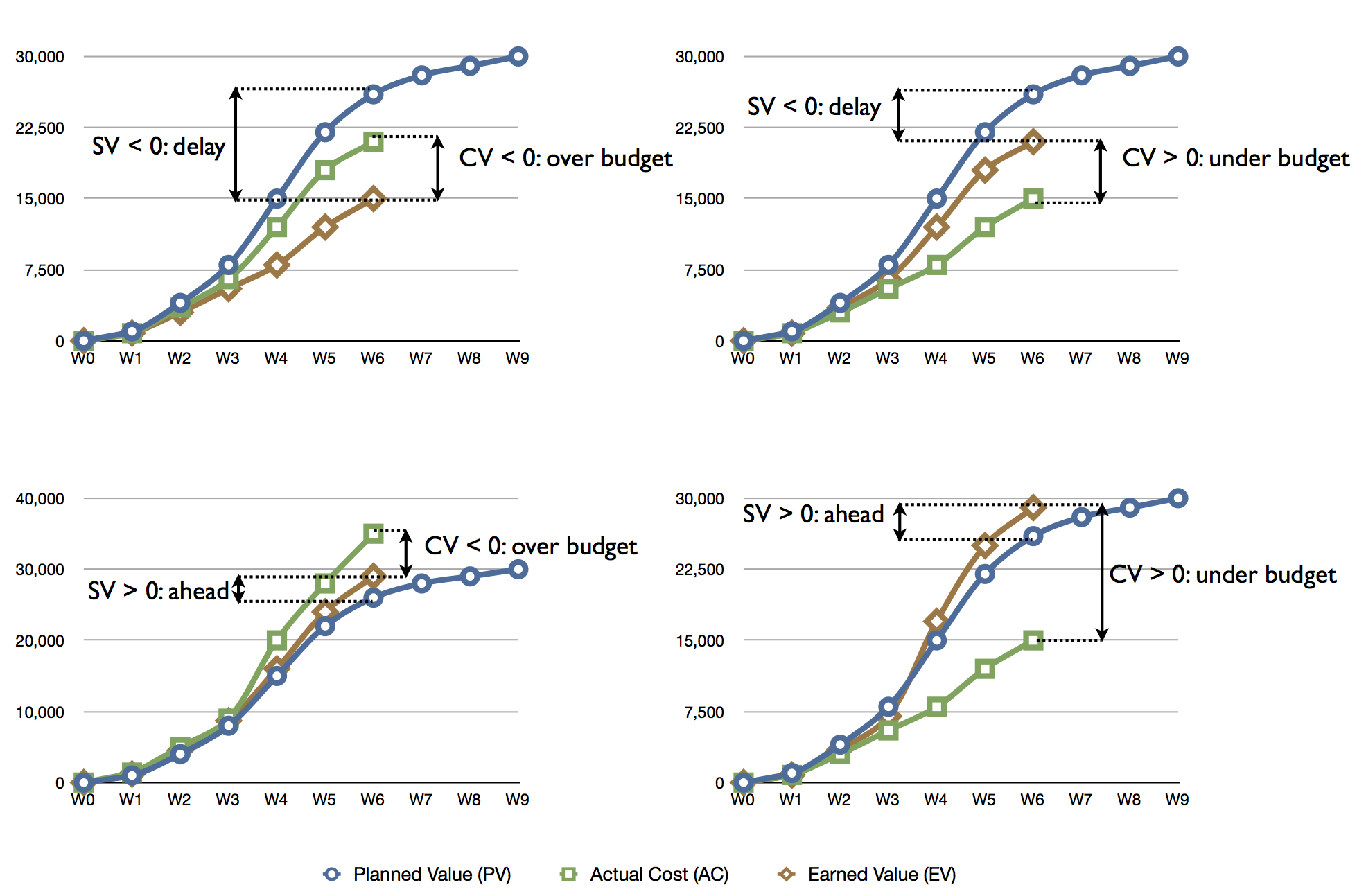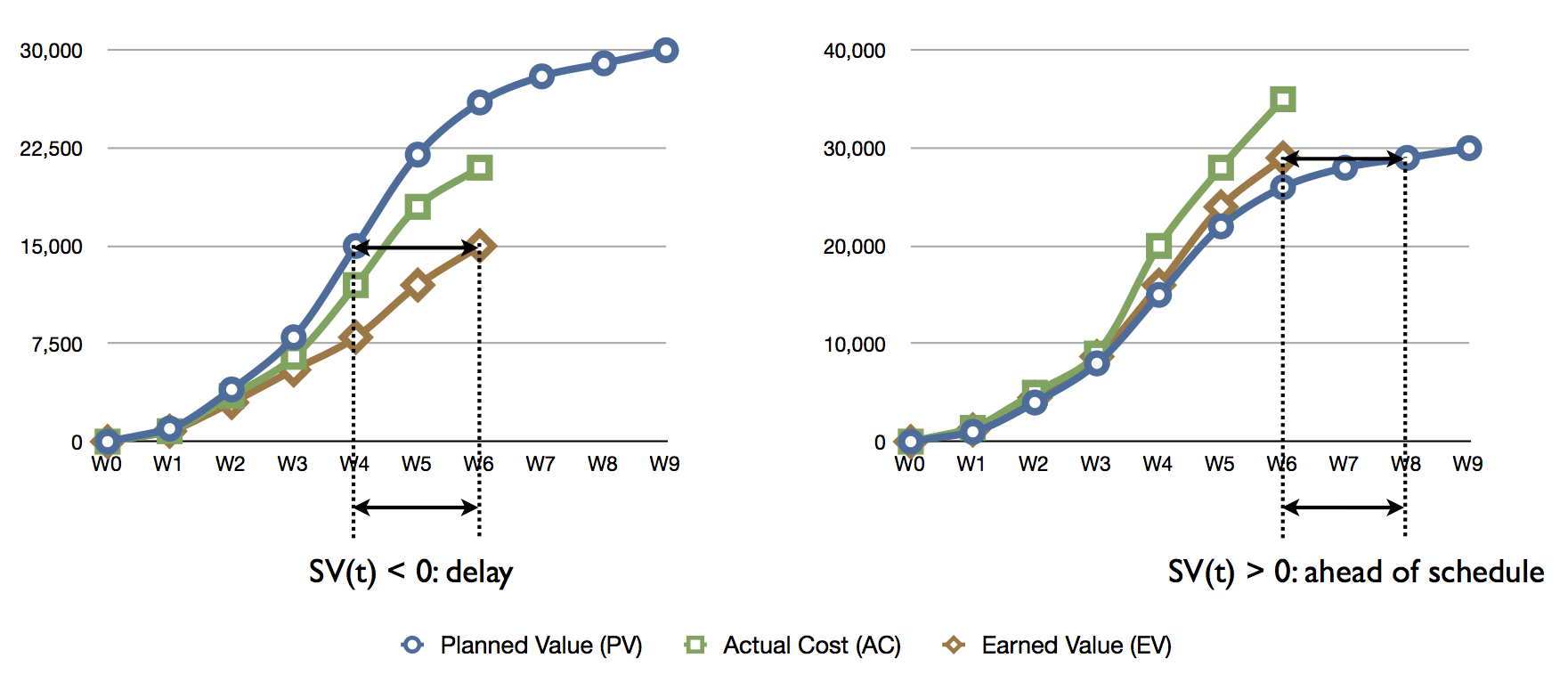Earned Value Management: An overview of project performance scenarios
Submitted by Mario Vanhoucke on Thu, 12/15/2011 - 12:15


The time and cost performance of a project in progress can be determined by comparing the three key parameters of an earned value management system, known as planned value (PV), actual cost (AC) and earned value (EV). These three metrics can be used to calculate two time variance measures SV and SV(t) and one cost variance CV, as follows:
Schedule Variance SV = EV − PV
< 0: project delay
= 0: project on schedule
> 0: project ahead of schedule
Schedule Variance with earned schedule SV(t) = ES − AT
< 0: project delay
= 0: project on schedule
> 0: project ahead of schedule
Cost Variance CV = EV − AC
< 0: budget overrun
= 0: project on budget
> 0: budget underrun
with AT the current or actual time.
For more information on the key metrics, the reader is referred to “Earned Value Management: The three key metrics”. Information on the SV and CV metrics can be found in “Earned Value Management: Measuring a project’s performance” while the SV(t) metric is explained in “Earned Value Management: Reliable time performance measurement”. An overview of these metrics in an earned value management system is given in “Earned Value Management: An overview”.
Given the two dimensions (time and cost) and their possible variances (zero, positive or negative), nine different project performance situations might occur.
- Scenario 1: late project, over budget
- Scenario 2: late project, on budget
- Scenario 3: late project, under budget
- Scenario 4: on time, over budget
- Scenario 5: on time, on budget
- Scenario 6: on time, under budget
- Scenario 7: early project, over budget
- Scenario 8: early project, on budget
- Scenario 9: early project, under budget
When the scenarios “on time” and/or “on budget” are excluded, the four remaining scenarios 1, 3, 7 and 9 can be graphically displayed using example project data with a planned duration of 9 weeks and the current actual time AT is equal to week 6.
Figure 1 displays the three EVM key parameters and the SV and CV metrics under the four remaining time/cost scenarios. Depending on the SV values, the project is early or late. The CV values determine whether the project is over or under budget. Figure 2 displays the three EVM key parameters and the SV(t) metric for an early and a late project scenario.

Figure 1: The EVM key metrics for early and late projects with cost under- and overruns

Figure 2: The PV and EV metrics for a late (left) and early (right) project
© OR-AS. PM Knowledge Center is made by OR-AS bvba | Contact us at info@or-as.be | Visit us at www.or-as.be | Follow us at @ORASTalks


